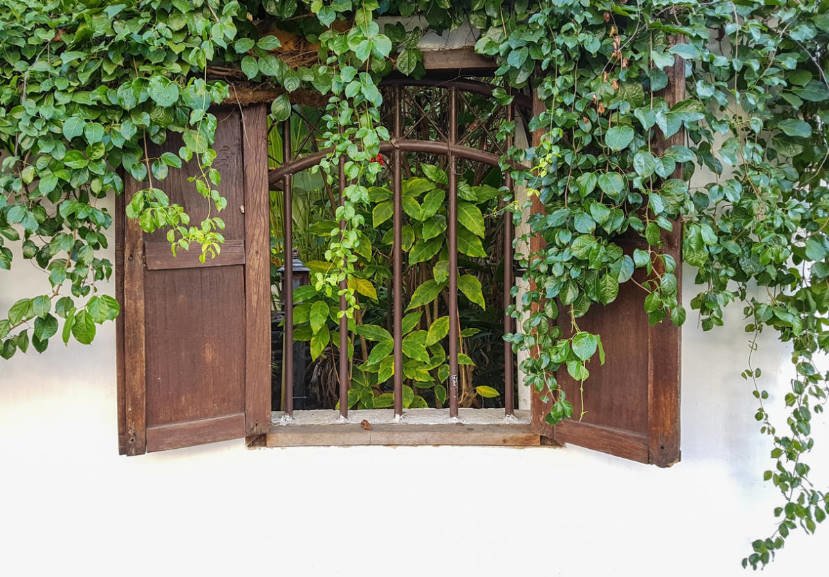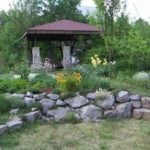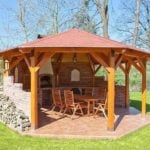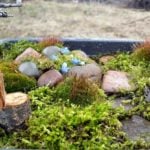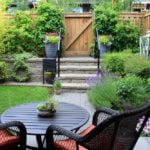After the winter, so want to quickly come summer. Waiting with impatience for warm days, we forget how in the summer heat we were exhausted from the heat and dreamed of coolness and shade, envying the owners of air conditioners. One of the methods of dealing with excessive sun in the room – it’s all sorts of curtains, curtains and blinds.
What are the only options for protection from the bright sunlight for the Windows did not come up with designers! Fabrics, metal, wood, modern plastics – all materials are used. However, now more and more people are thinking about the damage caused to nature by the desire of people to have more and more and change the objects of their everyday life not because they have become unfit for use, but only at the behest of rapid fashion.
Japanese architects and specialists in heat engineering have proposed the most environmentally friendly devices to protect the room from the heat and bright sun – green blinds, in which the sun screen is formed by climbing plants.

Green curtains
Although, in fact, nothing new they have not come up – vertical gardening is known to landscape designers for a long time. But the Japanese have proposed an approach to protection from the sun not only in terms of beauty, but also to save resources and care for the future of the planet.
On the distant approaches
Curtains on the Windows-quite an effective barrier to the penetration of sunlight and heat into the room. However, if the curtain is located not in the room, and outside, at some distance from the facade of the building, the protection will be more correct and effective.
On a hot summer day, the walls of houses in the open sun areas can be heated above the air temperature, and then heated buildings will give their heat to the environment, increasing the heat around them.
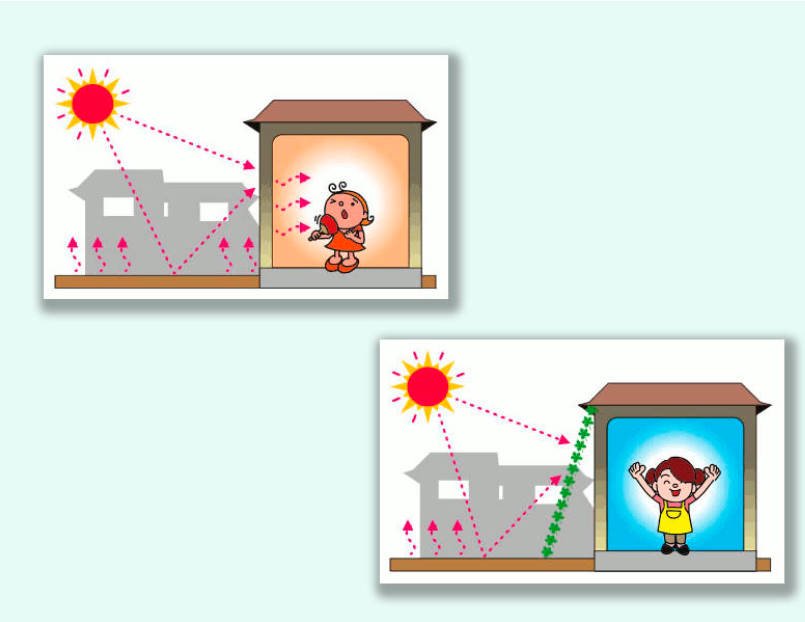
How the green screen works
From the schematic drawing of the Kyoto center for climate research, it is clear what principle underlies the protection of buildings with the help of green screens of plants: “wall” of vines does not give direct and reflected from the soil sunlight into the Windows and heat the wall of the house – radiant heat does not penetrate into the room. Also, the earth is not heated along the wall, which also reduces the heating of the house.
Transpiration is another mechanism that creates more comfortable conditions for people in the premises. The evaporation of moisture from the leaves of plants reduces the dryness of the air.
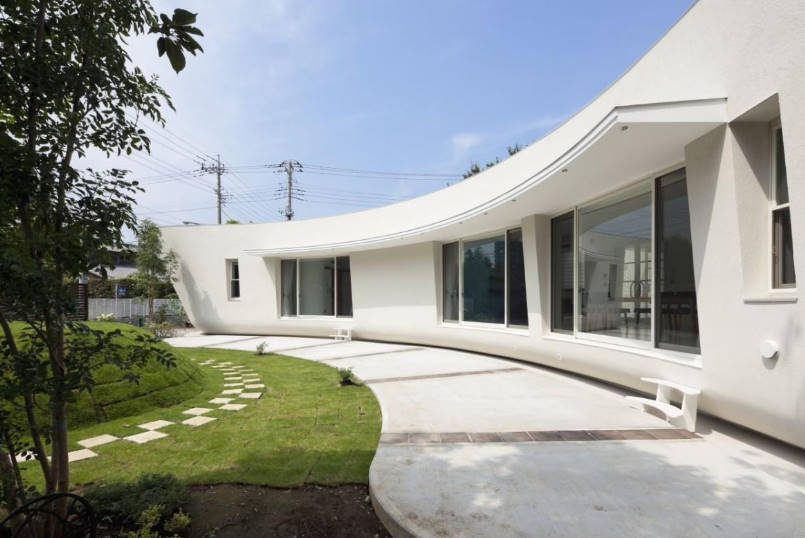
House to landing a green screen
To create a live screen planted climbing plants at a distance from the wall of the house. This not only gives the desired shade in the rooms, but also inexpensive decorates the facade.
See how impressive looks a private house in Saitama, Japan, designed by architect Hideo Kumaki. As a green screen architect used annual vines-Ipomoea and Momordica.
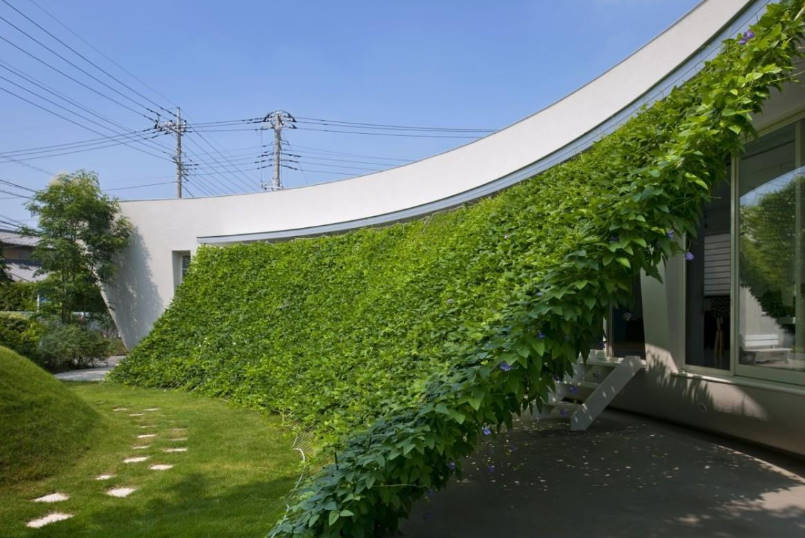
House with green screens
Green canopy creates coolness in the room and a great place to relax in the fresh air. Plants are based on a thin grid of plastic, stretched from the lawn to the cornice of the house.
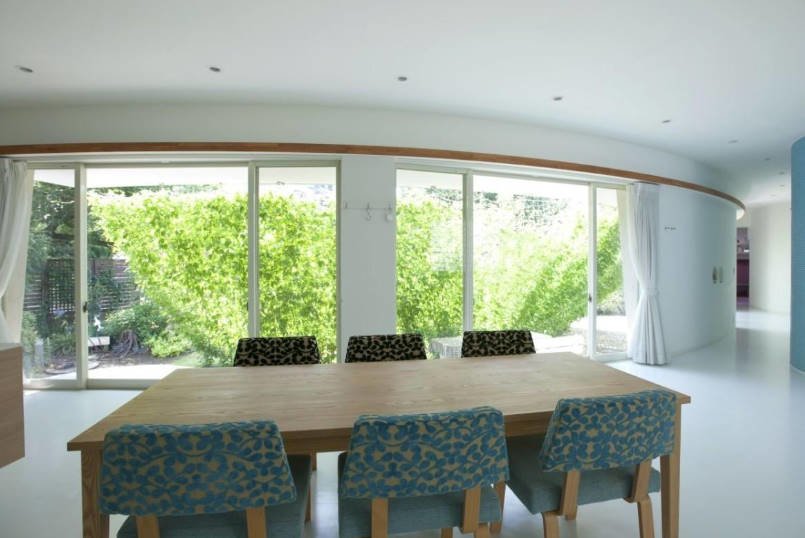
Shade from the green canopy in the living room
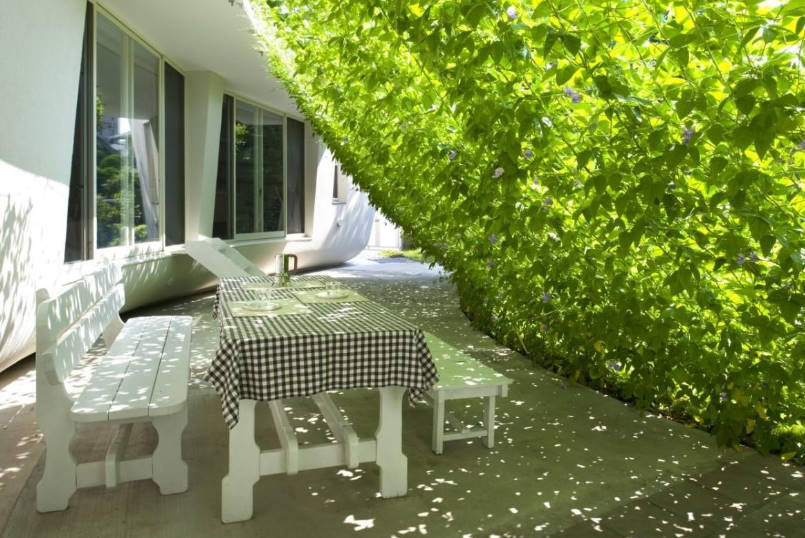
And the terrace
Green awnings of climbing plants in recent years are very popular in Japan. Today they are used for shading the facades of public buildings, schools, business centers, shops.
And the founder of this fashion can be considered a Japanese company “Kyocera”, engaged in the production of electronic components, consumer electronics, etc.
Green walls outside
In 2006, the company’s management decided to plant green curtains along the walls of its office and industrial premises as part of its environmental projects.
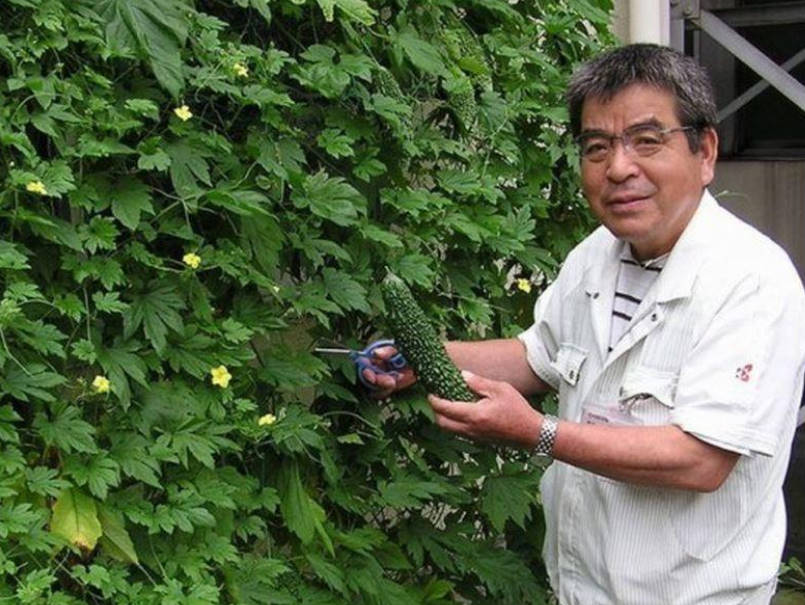
Kyocera’s green curtain
Today, nineteen branches of Kyocera in different cities of Japan are protected from the heat by screens of lianas. The total area of the green curtain “Kyocera” -almost 3.5 thousand square meters, they consist of cucumbers, beans, mini-pumpkins, Momordica and Ipomoea.
“Kyocera” is a high-tech company. Therefore, arranging a green finish of the facades of their buildings, its staff conducted a series of measurements of temperature and other parameters.
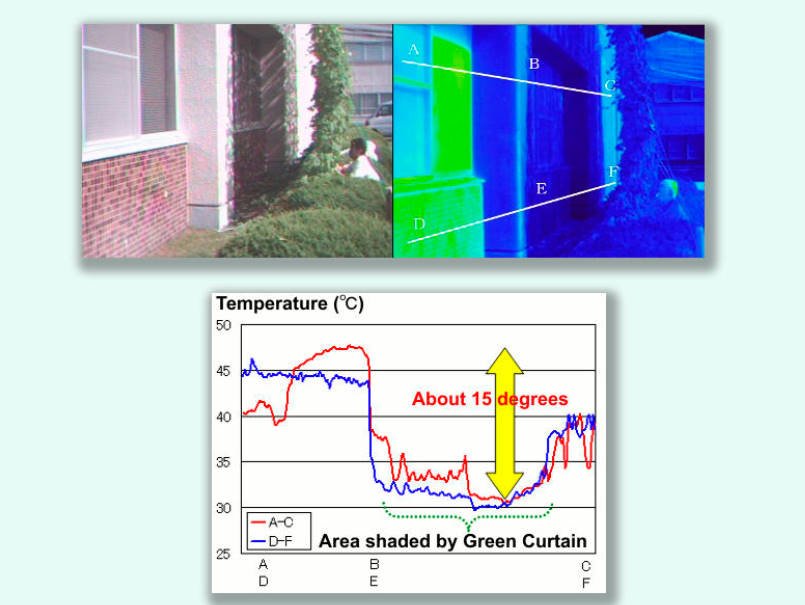
The results of measurements of the temperature of the facade by thermal imager
The image obtained with the help of a thermal imager shows how the temperature of the wall surface, protected by a screen of climbing plants, differs from the unprotected one. And the graphs below show that the difference between the heating of the “bare” wall and the shaded area is almost fifteen degrees!
In addition, green building screens absorb carbon dioxide – every square meter of this curtain consumes about 3.5 kg of CO2 per season, thus reducing the results of global warming on our planet.
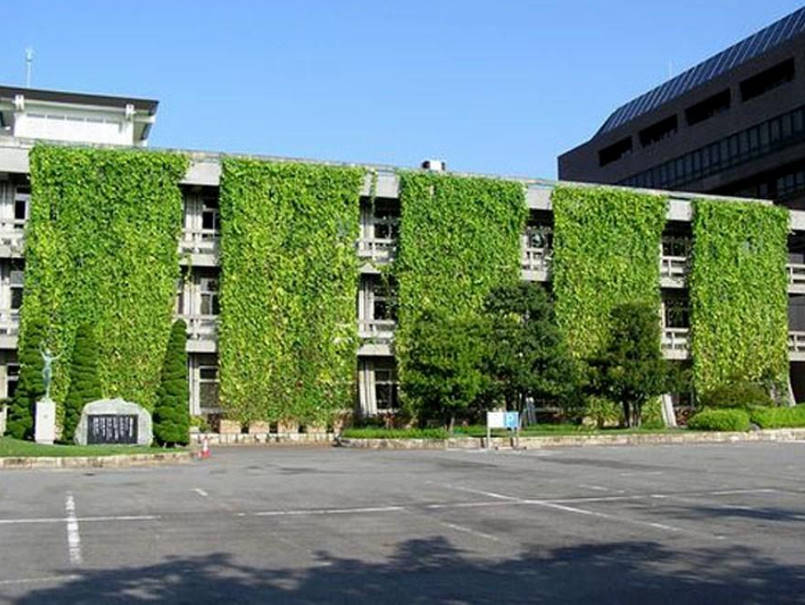
Green screens on the company building
According to Kyocera, the use of protective green screens on buildings has reduced the company’s electricity costs for air-conditioning by almost a third. And besides, Momordica fruits, beans, cucumbers and pumpkins grown on green screens are used for cooking to employees in the company’s dining rooms.
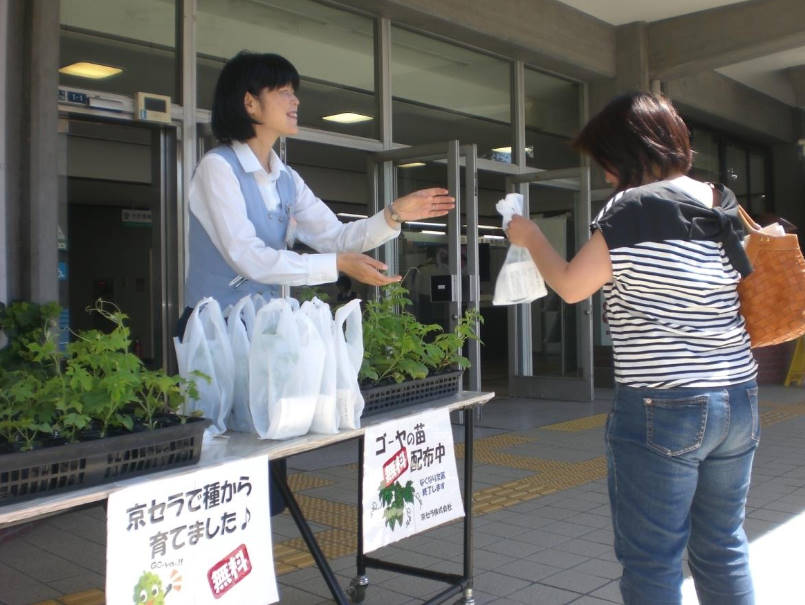
Residents distribute seeds and seedlings of plants for green screens
The company’s management pays much attention to the promotion of environmental protection of buildings from heat and energy saving through natural mechanisms of plant screens. Every spring, residents of the cities where the production of “Kyocera” is located are given free seeds and seedlings of plants for green canopies and instructions for creating screens of plants.
Perhaps, on the eve of summer and hot days, someone will need this idea of gardening-both beautiful and useful.
